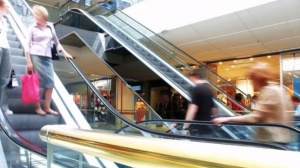Mall Intercept Company | Case Study
This blog post is a case summary of a recent mall intercept project completed by Research & Marketing Strategies (RMS). RMS specializes in mall intercept studies across many different states. If you are interested in conducting a survey with a mall intercept company, contact our Business Development Director Sandy Baker at SandyB@RMSresults.com or by calling 1-866-567-5422.
Objective: A national advertising agency recently partnered with Research & Marketing Strategies (RMS) to conduct customer profiling intercept surveys at a mall outside of the tri-state area. The objective of the shopper profile research was to help the client better understand the shopping habits within the mall, likes and dislikes about the mall, provide areas of improvement, and demographically profile customers. The research aimed to assist the client with a better understand of competitive shopping patterns and provide data to the mall to acquire new tenants.
Approach: RMS consulted with the mall manager and the advertising agency to create a 33 question intercept script that took respondents approximately 5 minutes to complete. Data was collected using both tablet devices and through paper administration on clipboards. A total of three interviewers were on-site at the mall (2 full-time interviewers and one supervisor). Interviewers arrived at the mall at 11:00 AM and remained through the evening until traffic declined. A total of 419 surveys were completed over the course of the four days of fieldwork. The surveys were collected near a variety of different stores (53 unique stores in total) at the mall.

Results: Here are few key takeaways from the research:
- Locally, the mall was losing shopper traffic due to customers deciding to dine elsewhere. Mall shoppers currently averaged 9 trips to the mall every three months but the variance in visits is largely due to light and heavy users (respondents most commonly reported only coming once). Consumers mainly shopped at the mall because it was: (1) convenient and (2) less crowded than competitive options. Cleanliness, safety, and parking availability were all factors that were scored well by respondents with regards to the mall. Customers largely come to the mall to shop, or shop and dine together, but rarely made the mall a destination simply for dining. Only 3% of the 419 respondents stated they specifically came to the mall to dine only. In many cases, shoppers were going to other nearby locations to dine and the food court was a common area suggested for improvement.
- Overall, shoppers believed the mall had gotten slightly better over the past 3 years. However, this slight improvement at the mall did not seem to discourage usage of competitive stores and restaurants. Consumers were going elsewhere to shop due to specific stores at other locations and/or a better variety of stores at competing malls. Specific stores drew direct traffic to the mall but shoppers were somewhat unsatisfied with the variety of stores at the mall, especially the 45 and under age group. Based on the data and traffic reported during the intercepts, one anchor store in particular did not draw through-traffic to its wing of the mall.
- Customers of the mall were mobile and social. Nearly three out of every four respondents (72%) owned a smart phone and 60% used social media websites such as Facebook. The mobile application for the mall received mixed appeal across all age groups. The small number of respondents that visited the mall website were mostly searching for hours so the app could streamline that process for users.
